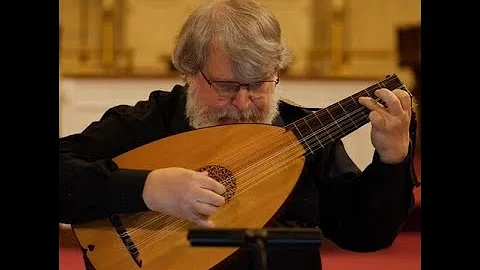Paul Oddou
age ~46
from Ridgecrest, CA
- Also known as:
-
- Paul Oddon
- Paul Oddo
- Paul Addou
- Paul W
- Phone and address:
- 1129 N Sierra View St, Ridgecrest, CA 93555
Paul Oddou Phones & Addresses
- 1129 N Sierra View St, Ridgecrest, CA 93555
- 1446 Burroughs St, Oceanside, CA 92054 • 7609674134
- Salt Lake City, UT
- 504 Seven Peaks Blvd, Provo, UT 84606
- Bedford, TX
- Park City, UT
- San Diego, CA
Work
-
Company:Watkins wellnessJan 1, 2014
-
Position:Senior project engineer
Education
-
Degree:Bachelors, Bachelor of Science
-
School / High School:Brigham Young University1996 to 2002
-
Specialities:Mechanical Engineering
Skills
Design For Manufacturing • Product Design • Solidworks • Manufacturing Engineering • Product Development • Gd&T • Fmea • Quality Control • Finite Element Analysis • Cad • Cad/Cam • Manufacturing • Lean Manufacturing • New Business Development • Leadership • Unigraphics • Nastran • Machining • Mechanical Product Design • Mechanical Engineering • Project Management
Languages
English • French
Interests
Skiing • Traveling • Paragliding • Learning • Exploring • Surfing • Spent 5 Years In France • Biking • Creating • Climbing
Industries
Health, Wellness And Fitness
Us Patents
-
Orthopedic Brace Having A Length-Adjusting Mechanism And A Lockable Rotation Hinge
view source -
US Patent:8172781, May 8, 2012
-
Filed:Mar 30, 2010
-
Appl. No.:12/750646
-
Inventors:Paul Oddou - Salt Lake City UT, US
Dylann D. Ceriani - San Diego CA, US
James D. Burke - Encinitas CA, US
Jeffrey T. Mason - Escondido CA, US -
Assignee:Breg, Inc. - Carlsbad CA
-
International Classification:A61F 5/37
A61F 5/00
A61F 13/00
A61F 13/06
A61B 19/00 -
US Classification:602 26, 602 5, 602 12, 602 16, 602 23, 602 60, 602 61, 602 62, 128846, 128869, 128882
-
Abstract:An orthopedic brace is provided with an adjustable support assembly having a support arm, a housing and a locking mechanism. The housing includes a travel track which slidably receives the support arm. The locking mechanism includes a lock lever which selectively applies a sufficient force to the support arm to prevent slidable displacement of the support arm in the travel track. The orthopedic brace is further provided with a hinge having a first rotation plate, a second rotation plate, a pivotal connector connecting the first and second rotation plates, a rotation limiting mechanism, and a rotation locking mechanism.
-
Support Assembly For An Orthopedic Brace Having A Length-Adjusting Mechanism
view source -
US Patent:8277403, Oct 2, 2012
-
Filed:Jan 12, 2005
-
Appl. No.:11/039056
-
Inventors:Dylann D. Ceriani - San Diego CA, US
James D. Burke - Encinitas CA, US
Paul Oddou - Oceanside CA, US -
Assignee:Breg, Inc. - Carlsbad CA
-
International Classification:A61F 5/37
A61F 13/00
A61F 5/00
A61F 13/06 -
US Classification:602 26, 128846, 128878, 128881, 128882, 602 5, 602 12, 602 16, 602 20, 602 23, 602 62
-
Abstract:An adjustable support assembly for an orthopedic brace has a support arm, a housing and a locking mechanism. The housing includes a travel track which slidably receives the support arm. The locking mechanism includes a lock lever which selectively applies a sufficient force to the support arm to prevent slidable displacement of the support arm in the travel track.
-
Releasably Locking Hinge For An Orthopedic Brace Having Adjustable Rotation Limits
view source -
US Patent:20060155230, Jul 13, 2006
-
Filed:Jan 12, 2005
-
Appl. No.:11/039448
-
Inventors:Jeffrey Mason - Escondido CA, US
Paul Oddou - Oceanside CA, US -
International Classification:A61F 5/00
-
US Classification:602016000, 602023000, 602026000
-
Abstract:A hinge is provided for an orthopedic brace having a first rotation plate, a second rotation plate, a pivotal connector connecting the first and second rotation plates, a rotation limiting mechanism, and a rotation locking mechanism. The rotation limiting mechanism includes a rotation limiting face formed in the peripheral edge of the second rotation plate and a rotation limiting assembly selectively positionable in a fixed position relative to the first rotation plate. The rotation limiting assembly has a stop face engageable with the rotation limiting face upon rotation of the first and second rotation plates, which limits further rotation in a first rotation direction. The rotation locking mechanism includes a rotation lock pin and a series of lock notches formed in the peripheral edge of the second rotation plate. The rotation lock pin is selectively positionable within one of the series of lock notches, which substantially locks the first and second rotation plates against rotation in the first rotation direction or in a second rotation direction opposite the first.
-
Carrying Device Waist Belt System
view source -
US Patent:20100243694, Sep 30, 2010
-
Filed:Feb 25, 2010
-
Appl. No.:12/712326
-
Inventors:Paul Oddou - Salt Lake City UT, US
Paul Terry - Park City UT, US
Thomas Zebucon Franke - , US
Nathan Miles Kuder - Sandy UT, US
Kathleen Marie Miller - Salt Lake City UT, US -
International Classification:A45F 5/00
A45F 3/04 -
US Classification:224633, 224637
-
Abstract:One embodiment of the present invention relates to a user based carrying system capable of independent transportation of a load including a hip-based user attachment system. The carrying system includes an enclosure member having an internal region encased by an internal surface. A user attachment system releasably secures the carrying system to the user for independent transportation without requiring muscular engagement. The user attachment system includes a hip attachment system with a dorsal articulation member and a strap member. The dorsal articulation member includes a front and rear member three-dimensionally moveably coupled to one another. The rear member is coupled to the enclosure member and the front member is coupled to the strap member. The three-dimensional moveable coupling between the front and rear members includes three restricted degrees of freedom configured to efficiently absorb corresponding user hip movements and directly support other user hip movements.
-
Multi-Chamber Carabiner
view source -
US Patent:20110138587, Jun 16, 2011
-
Filed:Dec 11, 2009
-
Appl. No.:12/636055
-
Inventors:Benjamin Walker - Draper UT, US
Paul Oddou - Salt Lake City UT, US
Bill Belcourt - Salt Lake City UT, US
Paul Terry - Park City UT, US -
International Classification:F16B 45/02
A44B 99/00 -
US Classification:245995, 245994
-
Abstract:One embodiment of the present invention relates to an automatically locking carabiner system including a frame, a gate, a gate biasing system, and a gate locking system. The frame and gate form a continuously enclosed inner region in a closed configuration with respect to the frame. When in an engaged state, the gate locking system is configured to automatically lock the gate in the closed configuration with respect to the frame. The gate locking system may include a trigger coupled to the frame such that the position of the trigger corresponds to the state of the gate locking system. The trigger may be positioned on an opposite side of the frame from the gate with respect to the inner region. The force required to disengage the gate locking system may be substantially opposite that which is required to transition the gate to the open configuration with respect to the frame.
-
Chlorine Generator System
view source -
US Patent:20190218116, Jul 18, 2019
-
Filed:Mar 21, 2019
-
Appl. No.:16/360655
-
Inventors:- Vista CA, US
Paul Oddou - Oceanside CA, US -
Assignee:Watkins Manufacturing Corporation - Vista CA
-
International Classification:C02F 1/467
A61L 2/26
A61L 2/18 -
Abstract:A chlorine generator apparatus wherein a housing is adapted to be mounted in an exterior, user-accessible surface of a spa and a chlorine generating electrode cartridge carrying a pair of electrodes is configured to be installable by a user in the housing and to thereafter be removeable by the user for replacement.
-
Chlorine Generator System
view source -
US Patent:20190218117, Jul 18, 2019
-
Filed:Mar 26, 2019
-
Appl. No.:16/365253
-
Inventors:- Vista CA, US
Paul Oddou - Oceanside CA, US -
Assignee:Watkins Manufacturing Corporation - Vista CA
-
International Classification:C02F 1/467
A61L 2/26
A61L 2/18 -
Abstract:A chlorine generator apparatus wherein a housing is adapted to be mounted in an exterior, user-accessible surface of a spa and a chlorine generating electrode cartridge carrying a pair of electrodes is configured to be installable by a user in the housing and to thereafter be removable by the user for replacement.
-
Chlorine Generator System
view source -
US Patent:20190016614, Jan 17, 2019
-
Filed:Jul 17, 2017
-
Appl. No.:15/651709
-
Inventors:- Vista CA, US
Paul Oddou - Oceanside CA, US -
Assignee:Watkins Manufacturing Corporation - Vista CA
-
International Classification:C02F 1/467
C02F 1/461
A61L 2/26
A61L 2/18 -
Abstract:A chlorine generator apparatus wherein a housing is adapted to be mounted in an exterior, user-accessible surface of a spa and a chlorine generating electrode cartridge carrying a pair of electrodes is configured to be installable by a user in the housing and to thereafter be removeable by the user for replacement.
Resumes

Senior Project Engineer
view sourceLocation:
1446 Burroughs St, Oceanside, CA 92054
Industry:
Health, Wellness And Fitness
Work:
Watkins Wellness
Senior Project Engineer
Black Diamond Equipment Jul 2007 - Jul 2013
Design Engineer
Breg Jan 2003 - Jul 2007
Design Engineer
Senior Project Engineer
Black Diamond Equipment Jul 2007 - Jul 2013
Design Engineer
Breg Jan 2003 - Jul 2007
Design Engineer
Education:
Brigham Young University 1996 - 2002
Bachelors, Bachelor of Science, Mechanical Engineering
Bachelors, Bachelor of Science, Mechanical Engineering
Skills:
Design For Manufacturing
Product Design
Solidworks
Manufacturing Engineering
Product Development
Gd&T
Fmea
Quality Control
Finite Element Analysis
Cad
Cad/Cam
Manufacturing
Lean Manufacturing
New Business Development
Leadership
Unigraphics
Nastran
Machining
Mechanical Product Design
Mechanical Engineering
Project Management
Product Design
Solidworks
Manufacturing Engineering
Product Development
Gd&T
Fmea
Quality Control
Finite Element Analysis
Cad
Cad/Cam
Manufacturing
Lean Manufacturing
New Business Development
Leadership
Unigraphics
Nastran
Machining
Mechanical Product Design
Mechanical Engineering
Project Management
Interests:
Skiing
Traveling
Paragliding
Learning
Exploring
Surfing
Spent 5 Years In France
Biking
Creating
Climbing
Traveling
Paragliding
Learning
Exploring
Surfing
Spent 5 Years In France
Biking
Creating
Climbing
Languages:
English
French
French
Mylife

Paul Oddou Oceanside CA
view sourceLocate Paul Oddou of Oceanside, CA online. See what your old friends, neighbors, and colleagues have been up to at MyLife.
Plaxo

Paul Oddou
view sourceGoogleplus

Paul Oddou

Paul Oddou
view sourceFriends:
Geoffrey Cognet, Melanie Oddou Karner, Solenne Lailler, Curtis Wong

Paul Oddou
view sourceYoutube
Get Report for Paul Oddou from Ridgecrest, CA, age ~46







